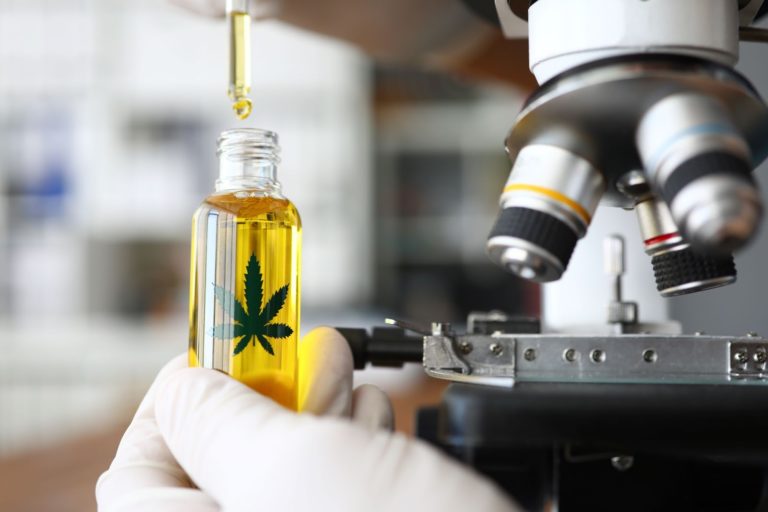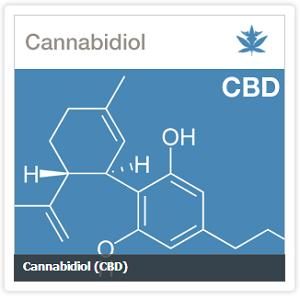 How Will Mainstream Media Spin This Government Study?
How Will Mainstream Media Spin This Government Study?
by Mitch Earleywine, Marijuana Policy Project
The Rorschach Inkblot test asks people to make up stories about ambiguous pictures. Rorschach’s hope was that the tales people told about each blot would reveal something about personal predilections and an approach to the world. Well, our friends at the National Institute on Drug Abuse have just published a nice inkblot test for the media. The experiment, “Tolerance to Effects of High-Dose Oral D9-Tetrahydrocannabinol and Plasma Cannabinoid Concentrations in Male Daily Cannabis Smokers,” is about (you guessed it!) developing tolerance to THC. We’ll see how media handle the implications of the results. It’s either a reassuring result for those concerned about safety on the roads or a chance for misguided alarms about purported dependence.
The experimenters drafted 13 guys who were experienced cannabis smokers to stay in the lab for several days. Each day, they had to swallow more and more Marinol. Marinol is pure THC in a pill, but without the cannabinoids and various compounds found in whole plant cannabis that mitigate the psychotropic effects of THC and perform other beneficial health functions. Many people have reportedthat Marinol left them far more impaired than plant cannabis, undoubtedly for this very reason. In fact, one guy dropped out “for personal reasons” and another “due to psychological reactions to THC.” These guys had smoked marijuana at least 1,000 times, so I’m guessing that they would have had a handle on “psychological reactions to THC” if they’d been allowed to (heaven forbid!) use their own stash. But the dosage was nothing to sneeze at — 120 mg of THC per day — or the equivalent amount of THC as three joints of decent medical cannabis in the U.S.
Why use Marinol instead of vaporized cannabis? As the authors proudly assert, “Many patients take oral cannabinoids daily for weeks or months with persisting beneficial clinical effects.” Yes. It is now okay for researchers at NIDA to say that oral cannabinoids are good. They mean Marinol, of course, but explaining why this wouldn’t apply to edibles is going to take quite the pretzel twist of logic. Stay tuned.
So what happened? As the title suggests, subjective reactions dropped dramatically in a few days. The guys were only about half as “high” by day five as they were on the first day of taking Marinol. But the amount of THC in their blood remained the same. That’s the definition of tolerance — a decreased effect with the same dosage. So the same guy with the same amount of THC in his blood felt fewer effects on one day than he did a couple days before.
What does this mean? Ah! That’s the real Rorschach Inkblot test for the media. What it really means is that tolerance to the subjective effects of THC is a lot like the tolerance we see for prescription drugs like Vicodin and other over-the-counter drugs like Benadryl. Folks who feel high at first don’t feel it after a few doses. It’s not much of a leap to assume that these effects correlate with motor skills. All the worry about medical users screwing up at work is probably misplaced; they’ll be tolerant after a few doses. And per se driving laws that suggest that a certain amount of THC in the blood means someone is definitely impaired are on thin ice. Different people with different levels of tolerance will react differently to the same dosage.
But Vicodin and Benadryl are not the center of fierce and emotional debates about driving. Antihistamines and prescription opiates alter subjective states. They can impair performance on the road, too, but their subjective effects decrease after a few doses. Notice that you don’t see widespread debate about how much of each of these drugs you’re allowed to have in your blood when you sit behind the steering wheel. Why should cannabis be any different?
As an aside, roadside sobriety tests that require actually doing something (standing on one foot, walking a straight line) are a good indicator of how well people can drive. They certainly beat the number of nanograms of metabolites of cannabis, Vicodin, or Benadryl per unit of blood. They’re also sensitive to conditions that have nothing to do with drugs, like fatigue or illness. But if the media mention any of these points, color me surprised.
What will the media do instead? I’m guessing here, and I hope I’m wrong. But I bet they’ll scream, “Tolerance! Oh no! That means THC leads to dependence.” This little logical leap is quite elegant. Alarmists might use these data to say that THC must be likely to cause dependence. Of course, one symptom does not make a dependence diagnosis. And we might actually have to think a minute about why tolerance is a symptom of dependence in the first place. With toxic drugs like alcohol and tobacco, the more you ingest, the more you hurt yourself. So tolerance to these drugs means people take more to get the same subjective effect, leading them to more and more damage. For alcohol and tobacco, this means greater risks of cancer, for example. But THC’s toxicity has been hard to find without elaborate equipment looking intensely at dinky portions of the brain after multiple years of use. And some of these studies end in big surprises. For example, two years of exposure has made rodents more likely to stay alive and less likely to get tumors, which is the exact opposite of toxicity.
So, we’ve discovered that the subjective effects of THC decrease after repeated doses. The finding’s unambiguous, but the stories people will tell about it could be as different as responses to an ink blot. Unfortunately, this ambiguity could end up having serious implications as states continue to experiment with alternatives to marijuana prohibition.
***
Dr. Mitch Earleywine is Professor of Clinical Psychology at the University at Albany, State University of New York, where he teaches drugs and human behavior, substance abuse treatment and clinical research methods. He is the author of more than 100 publications on drug use and abuse, including “Understanding Marijuana” and “The Parents’ Guide to Marijuana.” He is the only person to publish with both Oxford University and High Times.
Source: Marijuana Policy Project









